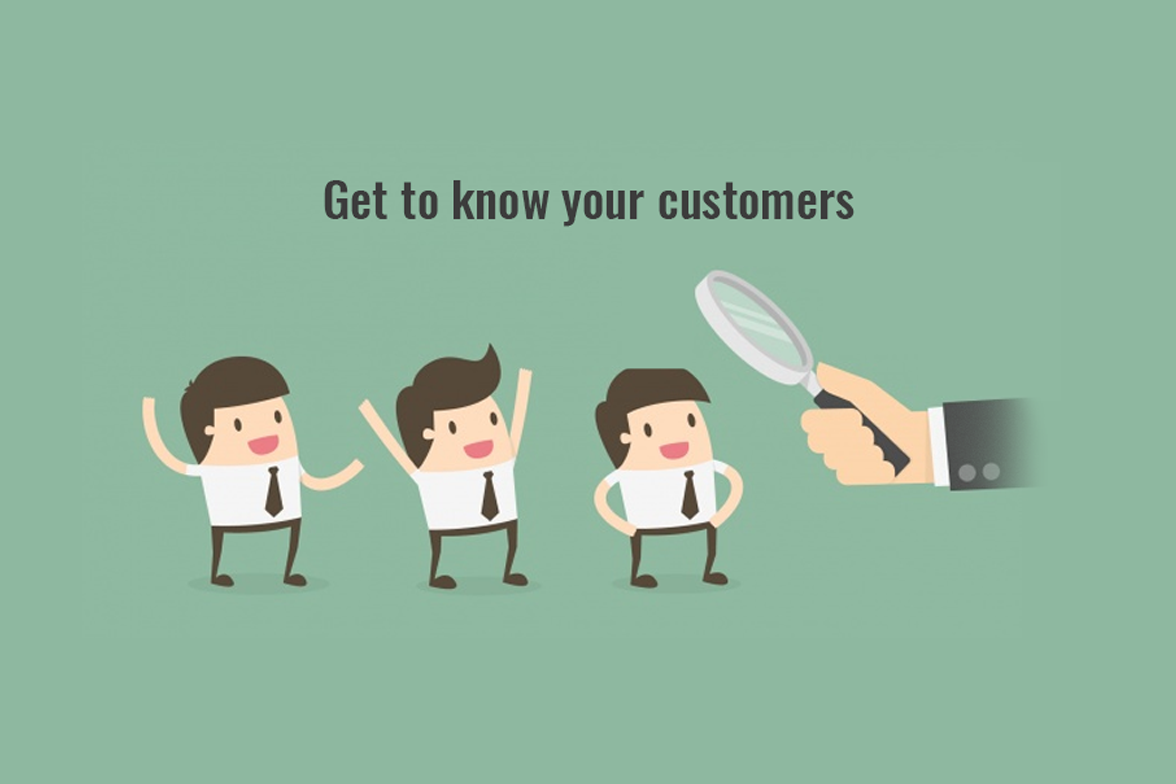Who are your customers, really? How well do you know your digital customer? quite almost anything, your ability to answer this question will determine the success or failure of your business. The archives of the US Patent and Trademark Office Database are filled with brilliant ideas that never took off. Countless successful companies have gone out of business. Expensive marketing campaigns with beautiful visuals and great products have led to public outcry and derision. Why did all of those businesses fail? Because they didn’t understand who their customers were. Your customers are the lifeblood of your business. If you don’t understand your customers, you don’t understand what the necessity or want from your business. You don’t skills to make products that they’ll love and you don’t skills to plug those products in ways in which your audience will answer. That’s why buyer personas are so important. an honest buyer persona gives you a concise, directed thanks to believing your customers. That way of thinking is critical—especially when it involves marketing. In this article, we’re getting to mention the way to put together a meaningful, useful buyer persona. this may be something you’ll use as a point of reference in your own marketing and something that you simply can share with others as your business grows and develops. Sound sort of a plan? Let’s get started!
Why Buyer Personas Matter
Most businesses think they know their customers. this is often very true of companies that are in business for a short time. After all, if you don’t have a way for what your customers want, why would people keep buying from you? But here’s the thing, while that’s technically true, there’s an enormous difference between selling something that folks want to shop for and truly understanding who your customers are and why they buy. This sort of story isn’t new, either. Barnes & Noble tried and did not adapt to how Amazon was changing the book industry. As a result, they’ve been in financial freefall for years. Yahoo Mail and Hotmail were once the dominant email platforms. They did not continue with what their customers wanted, however, and now together their user base is one-third the dimensions of Gmail’s. Blackberries were once the smartphone. But, they misunderstood what their customers really wanted and today, they represent but 0.3% of smartphone sales. To put it simply, the sole thanks to run, market, and grow an e-Commerce business is to really know your customers. And for that, you would like to make and use effective e-Commerce buyer personas.
Getting to Know Your Digital Customer
Ever since Alan Cooper first coined the term in his classic book, The Inmates are Running the Asylum, the concept of “buyer personas” has become a marketing staple. If you’re not conversant in the term, a buyer persona is what it sounds like: an in-depth profile of a business’s ideal buyer. Unfortunately, while the concept of “buyer personas” has been around for many years, clearly, most marketers don’t really understand the way to build or use them effectively. this is often particularly true amongst e-Commerce marketers, many of whom have little-to-no actual contact with the people they’re selling to! But there’s excellent news altogether of this. Since most marketers don’t have a really good pity for their customers, if you’ll create effective e-Commerce buyer personas, you’ve got an enormous market advantage. The better you understand your customers, the higher you’ll be at finding and connecting with potential customers. But that’s only possible if you’re taking the time to urge to understand your audience first.
Getting to Know Your Customers
Done right, your buyer personas should sum up each sort of potential customer you’re marketing to. But to work out who those customers are, you would like to urge to understand the absolute best potential customers you’ve got: the lads and ladies who’ve already made a sale from you. However they found your business, these men and ladies decided that your products were well worth the investment. They’re the right example of the type of individuals you’re hoping to draw in together with your marketing. After all, your products were properly to fit their needs and goals. Now the sole question is, why? To answer that question, you’ll get to pull from a variety of various sources. for a few of it, you’ll be ready to use your online analytics data, except for most of it, you’ll get to actually ask people. ask your sales team. ask your customer service reps. ask your customers themselves. Yes, it’ll take some extra effort, but it’ll all pay off within the end of the day. Asking the proper people the proper questions is that the secret to making an efficient buyer persona. Once you understand who your customers are, what they’re like, and why they decided to shop for from you—instead of a competitor—you can use that information in every aspect of your online marketing.
Demographics
Demographic data is that the simplest part of your buyer persona. It basically answers the question, “who is your persona?” Maybe they’re a 35-year-old white male with a Bachelor’s Degree in Horticulture. Or, they might be a 55-year-old divorced woman with a high school diploma. Regardless of the specifics, your demographic data gives you specific insights into the makeup of your target audience—essential information you’ll need as you found out and run your marketing campaigns.
Here are a couple of inquiries to answer regarding the demographics of your buyer persona:
What is the typical age range of this sort of customer?
What percent of them are male/female?
What is their average household income?
Are they married? Single? Divorced?
Do they need kids? If so, how many?
Where are most of the buyers who fit this persona from? Where is home for them?
What is the very best level of education they’ve achieved?
Most of the time, demographic data is pretty easy to trace down. Most of this information can often be found in your analytics data, with some simple Google searches or by finding out a database, so you ought to be ready to get at it without much trouble. If not, a fast survey or two will assist you to figure things out fairly quickly.
Traits
Traits tell you what your buyer persona is like. Maybe most of the potential buyers who fit this persona are outdoorsmen or women who want to work as electricians. Alternatively, they could be single parents who sleep in their moms’ basement and are juggling jobs at two fast-food restaurants. Here, your goal is to urge a pity a day-in-the-life of your buyer persona. What are their challenges and dreams? What do they wish to neutralize their free time? What social groups are they a neighborhood of? These traits will assist you to find out how to seek out and connect with potential customers online.
Here are a couple of questions that will assist you to get at the traits of your buyer persona:
What did/do your current customers do for a living?
What do they wish to do for fun?
What are their hobbies, passions, and interests?
Do they sleep in an urban, suburban, or rural environment?
What is the buyer’s lifestyle like?
How tech-savvy are your customers?
Is social media a crucial part of their life? If so, which social networks do they prefer?
How does the customer wish to communicate? Text? Email? Social media? Over the phone?
As you’ll probably imagine, most of this information isn’t available on Google Analytics. to work out your persona’s traits, you’ll get to ask or survey customers, salespeople, and your customer service team.
Motivations
Finally, we’ve motivations. Motivations tell you why your buyer persona is curious about your product(s). Maybe most of your customers bought from you because that they had a selected problem that your product solved. Maybe they need a lover that they thought would love your product. Maybe they only liked the way it looked. Motivation is probably the foremost important part of your buyer persona. Demographics data and traits are great, but if you don’t understand why people buy, it’s getting to be hard to motivate more people to form an equivalent choice. When you understand your buyer persona’s motivations, you’ll create a marketing message which will resonate together with your audience. By addressing their needs, wants, aspirations, and/or goals, you’ll speak to them in a way that matters…and motivates them to action. Apple may be a great example of this. Apple understands that its buyers want to feel cool, modern, and connected. As a result, all of Apple’s ads are designed to evoke those emotions. When you watch an Apple ad, you almost can’t help but think, “If I even have one among those devices, I’ll be a part of the ‘in crowd’. I’ll have the absolute best tech that cash can purchase and life is going to be awesome!” Say what you would like about the particular quality of Apple’s devices and ecosystem, they need to create an experience that their customers invest in and love. They know what motivates their customers, and as a result, their buyers keep returning for years to return. Unlike demographics and traits, motivation data would require a touch more digging. accessing the why behind people’s actions would require you to think deeply and ask the proper questions.
To help get you started, though, here are a couple of questions you’ll want to answer regarding the motivations of your buyer persona:
What problem are your customers trying to unravel once they buy your product(s)?
What positive outcome are your customers expecting/hoping for?
What are your customers afraid of?
What do they aspire to?
Are your buyers primarily motivated by their fears or their goals/aspirations?
Why did your current customers plan to buy from you? (vs the competition).
Surveys are often helpful thanks to getting surface-level insights or a broad perspective on a persona’s motivations, but to actually get the data you would like, you ought to ask a spread of consumers. found out interviews. Read and answer comments on your social media posts. Examine your reviews (good and bad) and therefore the reviews of your competitors. In the end, the goal of building your buyer personas is to actually get to understand your customers. the higher you recognize your current customers, the better it’ll be to seek out and market to potential customers online. But, for your buyer personas to be truly useful, you can’t stop with demographics or maybe traits. you’ve got to know everything about your customers—the who, what, and why.
Conclusion
When you get right down to it, customer buyer personas are really the lifeblood of your business. And nowhere is this is more true than in marketing. Who your customers are, what motivates them, and why they buy are critical to running successful marketing campaigns. are you able to build a business without understanding your customers? Maybe, for a time a minimum of, but if you don’t truly understand whom you’re selling to, eventually which will come to bite you. If you would like to achieve success as a business (and especially as a marketer), you’ve got to understand your customers inside and out. Fortunately, now that you’ve read through this text, you ought to have an honest sense of a way to try to do that. Now all you’ve got to try to do is put the time and energy to create out truly effective buyer personas.





